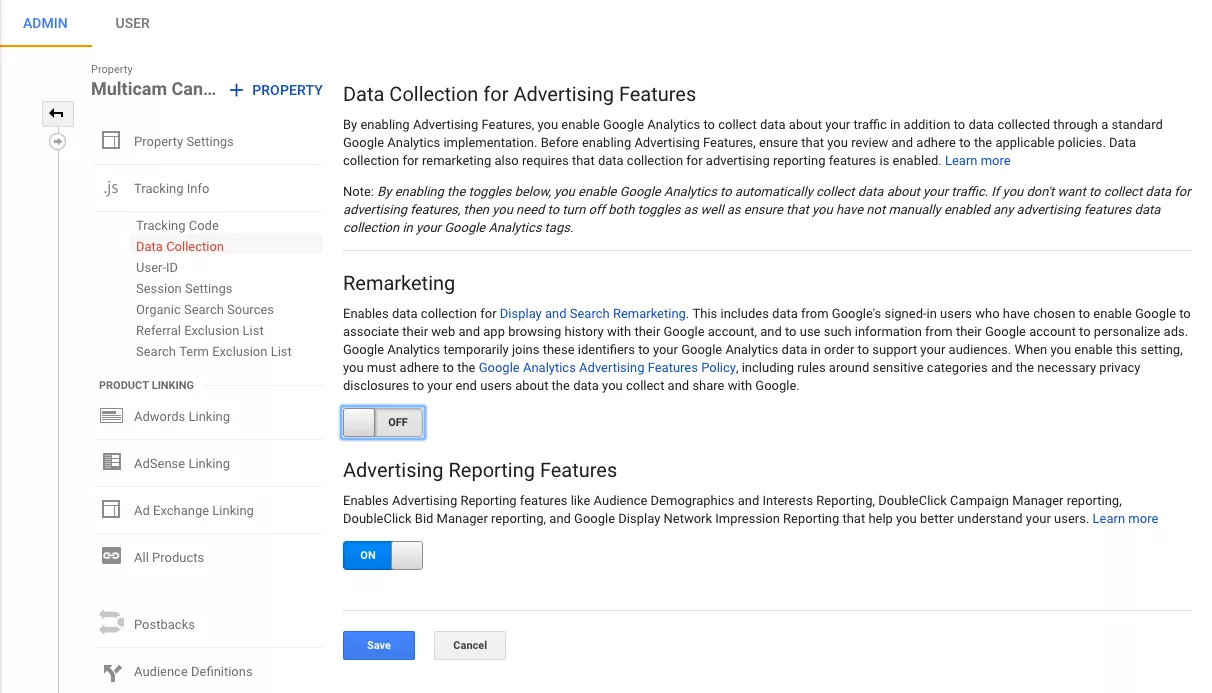Advanced Techniques for Remarketing In Google Analytics
Advanced Techniques for Remarketing In Google Analytics
Blog Article
Using Remarketing in Google Analytics: A Comprehensive Guide
Using remarketing in Google Analytics uses organizations a tactical edge in getting to out to possible customers. The capability to target people that have already interacted with your site offers an unique opportunity for tailored marketing initiatives. By recognizing how to craft audience listings and release them properly, organizations can substantially improve their conversion prices. The ins and outs of establishing up and maximizing remarketing projects require a detailed understanding of audience segmentation and performance analysis. This guide will drop light on the vital actions included in taking advantage of the full capacity of remarketing in Google Analytics, causing improved advertising results.
Comprehending Remarketing in Google Analytics
Remarketing in Google Analytics permits companies to strategically target individuals who have previously connected with their web site or mobile app. By leveraging information from Google Analytics, organizations can create tailored remarketing listings based on individual behavior, such as web pages gone to, activities taken, or certain goals attained. This powerful device makes it possible for businesses to re-engage with users that have revealed interest in their service or products, inevitably boosting the possibility of conversion.
Recognizing the different kinds of remarketing techniques is critical for a successful campaign - What Is “Remarketing” In Google Analytics?. Google Analytics supplies different choices, consisting of conventional remarketing, vibrant remarketing, and remarketing checklists for search ads (RLSA) Each type serves an one-of-a-kind objective and can be tailored to meet particular advertising and marketing purposes
Additionally, examining the performance of remarketing projects is important for optimizing results. Google Analytics gives useful understandings right into the effectiveness of various remarketing strategies, allowing companies to make data-driven decisions and improve their targeting approach. By continually changing and checking remarketing initiatives based upon analytics information, services can make the most of ROI and drive success in their advertising and marketing campaigns.
Establishing Remarketing Projects

After establishing target market listings, the next step is to connect Google Analytics with Google Ads. By connecting these two platforms, businesses can flawlessly move audience lists from Google Analytics to Google Advertisements for remarketing purposes. This integration enables even more accurate targeting and far better project performance.
As soon as the accounts are connected, organizations can produce remarketing projects in Google Advertisements utilizing the audience provides previously specified in Google Analytics. These projects can be customized with specific advertisement creatives, messaging, and bidding approaches to efficiently re-engage with previous visitors and drive conversions. By adhering to these actions, businesses can utilize the power of remarketing to improve their marketing initiatives and enhance ROI.
Making Use Of Target Market Segmentation Strategies

Predefined sectors in Google Analytics allow you to quickly examine common target market categories fresh customers, returning customers, or users who completed a certain goal on your site. Custom sections, on the various other hand, allow you to create distinct sections based on particular requirements that are very important to your company objectives. Dynamic remarketing lists immediately change based on customer behavior, showing personalized ads to individuals who have communicated with your website in particular methods.
Analyzing Remarketing Performance Metrics
Upon reviewing the effectiveness of remarketing projects in Google Analytics, the analysis of crucial efficiency metrics provides beneficial insights into target market interaction and conversion prices. By diving right into metrics such as click-through rates (CTR), conversion rates, cost per procurement (CERTIFIED PUBLIC ACCOUNTANT), and return on advertisement invest (ROAS), marketing professionals he has a good point can gauge the success of their remarketing initiatives. Evaluating these metrics enables marketing experts to optimize projects, fine-tune target market targeting, and assign spending plans efficiently to improve total remarketing performance.
Enhancing Remarketing Techniques
When refining remarketing strategies in Google Analytics, concentrating on target market segmentation is vital for attaining campaign success. By splitting your target market into particular sectors based on their behavior, demographics, or rate of interests, you can customize your advertisements better to each group. This targeted technique boosts the chance of involving users who have already shown rate of interest in your service or products, bring about greater conversion rates.
Another important facet of maximizing remarketing strategies is continually screening and refining your projects (What Is “Remarketing” In Google Analytics?). A/B screening different advertisement creatives, messaging, or deals can aid you determine what reverberates finest with your target market and drives one of the most conversions. By examining the efficiency of these examinations in Google Analytics, you can make data-driven choices to enhance your remarketing initiatives additionally
In addition, leveraging dynamic remarketing can considerably enhance your campaign results. This function enables you to reveal customized ads to users based upon their previous communications with your website, showcasing items or services they have actually formerly checked out. By providing tailored material to users based on their passions and actions, dynamic remarketing can aid boost involvement and drive conversions.
Verdict
Finally, utilizing remarketing in Google Analytics is a tactical approach to target customers that have formerly involved with a site. By creating customized target market lists and making use of audience division methods, services can maximize remarketing campaigns for increased conversion prices. Examining performance metrics and constantly optimizing methods are crucial for making the most of the effectiveness of remarketing initiatives.
Google Analytics supplies different choices, consisting of common remarketing, vibrant remarketing, and remarketing listings for search advertisements (RLSA)After establishing up audience checklists, the next action is to link Google Analytics with Google Advertisements. By connecting these 2 systems, services can seamlessly transfer target market checklists from Google Analytics to Google Ads for remarketing objectives.Once the accounts are connected, organizations can create remarketing campaigns in Google Advertisements making use of the click here to read audience details previously defined in Google Analytics.When refining remarketing methods in Google Analytics, focusing on target market try this division is paramount for accomplishing project success.
Report this page